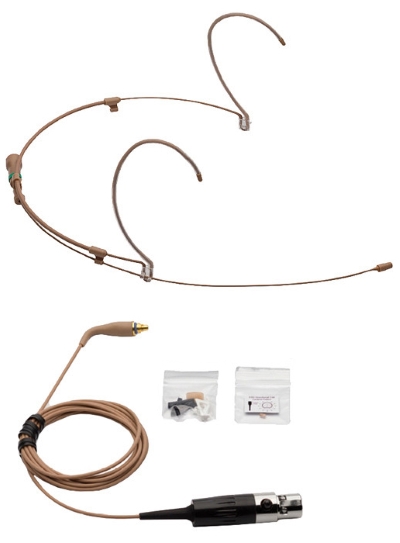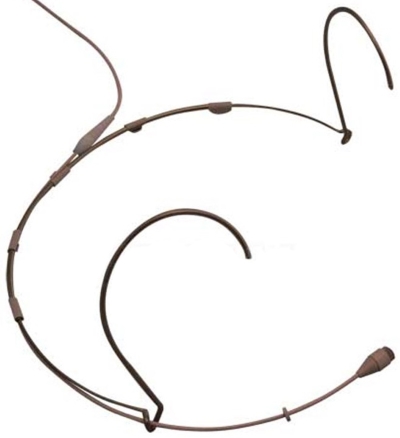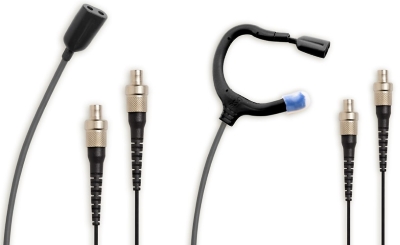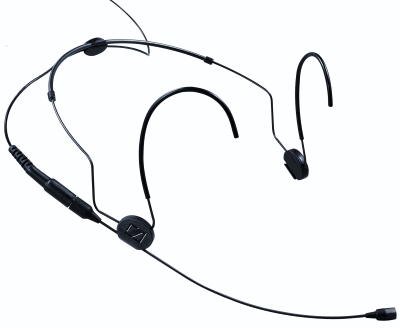Headset and earset microphones are a staple in live theatre, corporate events, presentations, and houses of worship, and they’re also useful for concert vocals when a performer is in motion or whose hands are otherwise occupied.
This latest generation of miniature condenser mics offers excellent audio quality and the ability to place the microphone element at a consistent location near the vocal source, with a stable mounting that is relatively comfortable for the user – all while being visibly unobtrusive.
Normally paired with wireless transmitters, headsets give users mobility without sacrificing great sound. And with their close and consistent placement relative to the audio source, the majority of these mics are able to use an omnidirectional polar pattern, so that the frequency response is smooth and natural without introducing proximity effect while the level remains consistent as the user’s head turns. These mics can also attain high gain before feedback yet provide sufficient isolation from other sounds on stage.
Where It’s At

Technology sometimes changes in leaps and bounds, but more often in incremental steps. With headsets, the dual-ear style retains the basic form of a loop that goes behind the head with bends on both sides to hang onto the ears, supporting an attached “boom” that places a small capsule near the mouth.
However, compared to examples from even a decade or so ago, the current offerings are much lighter and more comfortable, can be adjusted easily to fit the user, and are more stable in placement.
For example, the Countryman H6 is strong yet feather light, with the earpieces individually telescoping from a curved frame that is only about 1/16 of an inch in diameter, with enough friction in the fitting that they stay in place when the size is right – and with enough adjustability to fit a child or an adult. The boom is similarly adjustable for exact positioning relative to the corner of the mouth, and can be clipped to either side of the headset.
Going in a somewhat different direction, the DPA d:fine headset’s frame consists of two lengths of very thin spring steel wire, just a bit larger in diameter than a B string on an acoustic guitar, that are held together by a pair of firmly wrapped wire coils.
The travel of this diminutive frame is approximately 5 inches, so that it will fit small or large heads and stay in place when set. Soft, siliconized earpieces are connected to the frame with an unusual joint that allows them to rotate so that the headset may be stored flat when not in use.

RØDE has elected to offer two sizes of its HS2-B adjustable headsets, both with a stainless spring steel headband and mic boom. The arc of the headband is 15 mm less in the smaller version, for a more secure fit on smaller users. A miniature omni condenser completes the package.
Single Ear
The relatively recent advent of single-ear headsets that are both comfortable and stable has made this format a viable option, even for performers who move vigorously.
A design used by several manufacturers consists of a malleable metal core surrounded by a molded elastomeric earpiece, creating a soft, flexible structure that can be easily shaped to the curve of the ear, gently holding its place without slipping. I’ve worn several, and they will hold steady even with jumps and head shakes.
The Mogan Elite earset, introduced in 2012, is an earlier example of this design. Its C-shaped earpiece grips well, with a thin mic boom extending from the bottom of the curve that positions the 2.5 mm omni mic element just behind the corner of the mouth. A threaded mini-connector connects to the replaceable cable, with terminations for a variety of transmitters.

The Galaxy ES3 has a similar format, with the mic boom ending in a somewhat larger yet still unobtrusive 5 mm element and a gold-plated connector solidly molded in. DPA’s design is more like a springy, thin coil arising from a stable lower base, which wraps around the top of the ear to keep the mic in place. Two mic boom lengths are available that fit into the base.
Point Source Audio refines this concept with Embrace, outfitted with a replaceable earpiece that’s able to be bent and trimmed to size in order to exactly fit the particular user. The “blank” earpiece is an offset C-shape that if stretched out would measure about 6 inches. The middle 4 inches have a malleable core that can be bent and twisted to fit, and any excess length for the user can be trimmed off.
The cable is then pressed into a channel in the earpiece, positioning the mic element at the top front of the ear, pointing down toward the mouth: creating a custom-fit earset is a rapid and reliable process. Embrace is a disguised earset format, particularly targeted toward live theatre and TV broadcast applications where a boom would visually interfere.
Miniature Elements
At the heart of what makes modern headset mics possible is the ability to design and build miniature transducers with the precision and consistency to faithfully capture and reproduce the range and characteristics of the voice (and of musical instruments). The concept of “miniature” has gone from over a half inch in diameter in the 1990s to around 0.1 inch at present.
Innovative engineering and technology have led the way. Chris Countryman says, “Moving to a miniature size means that many of the tightest tolerance structures can be fabricated in one piece using precision etching techniques.” He adds that careful port design and internal layout are critical in controlling resonances so that the microphone’s response remains flat over the full frequency range.
Countryman’s proprietary drilling process to “provide pressure equalization and also control the low-frequency roll off” is computer-aided, with the holes in the range of 0.0005 to 0.003 of an inch in diameter – thinner than a human hair. Experienced technicians still play a role in the build process, with “an interesting mix of very skilled microscope hand work in concert with computer-controlled manufacturing.”




















